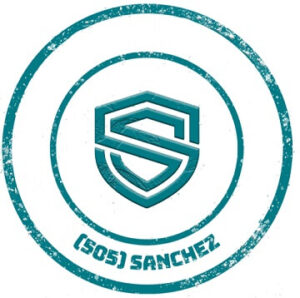
Fighting false allegations of child abuse in child custody cases requires attention, diligence, and action.
In other words, you cannot fight false claims by sitting on your hands. Moreover, you cannot stop false accusations by hoping that they go away.
Here is what you need to know about fighting false allegations of child abuse in child custody cases.
WHEN FALSE ALLEGATIONS OF CHILD ABUSE COMMONLY OCCUR
False allegations of abuse commonly occur with volatile relationships.
This volatile relationship usually involves a divorce or separation. In this respect, false allegations often happen during divorce or separation when child custody is a hotly contested issue.
Moreover, sometimes false allegations are coupled with a request for restraining order of protection.
At times, a restraining order is used to gain a strategic advantage in a forthcoming custody or visitation case.
Specifically, a restraining order can result in temporary sole legal custody being granted. In other situations, a restraining order can lead to a six-month order that requires supervised or limited visitation.
Moving forward, this “temporary” order creates a status quo that is difficult to change. In other words, a restraining order starts your custody case on bad footing.
This bad footing leads you in the wrong direction.
NOTICE WARNING SIGNS
Is your ex the type to raise false allegations of child abuse?
Alternatively, has your ex already dropped hints about the potential for allegations?
For example, has your ex subtly commented about markings, bruises, or inappropriate behavior?
If so, you should be on heightened alert. In doing so, you should diligently watch for warning signs.
Noticing warning signs can help you proactively stop the fire of false allegations.
DOCUMENT CUTS AND BRUISES IN YOUR CARE
Was your child injured in your care?
Have you noticed any cuts or bruises? If so, send a quick text/email addressing the bruising. This text provides an immediate explanation.
Failing to provide an explanation may enable your ex to provide an alternative, negative, and potentially self-serving explanation.
Alternatively, your ex may subtly coach your child into “remembering” a different event.
Claims of markings or bruises tend to surround claims of inadequate care. Therefore, document rashes or diaper sores.
Seemingly minor events can avalanche into something major. For example, a common cut and diaper rash can transform into allegations of abuse, neglect, or lack of supervision.
Be diligent and take immediate action.
Treat the cut, bruise, or rash.
After treatment, send a quick message putting your ex on notice. In doing so, document what happened, and the corrective steps taken.
Your message doesn’t need to sound lawyerly.
Your message doesn’t need to be a Shakespearian masterpiece.
Keep your messages short and sweet.
In fact, some judges may view long, emotional, and insulting messages as abusive.
Best practice is briefly explaining the cut or bruise. Moreover, explain the marking in a non-confrontational manner. In other words, send a message that suggests you are on the same team.
A civil message helps to foster co-parenting.
In turn, healthy co-parenting may prevent potentially avoidable allegations of child abuse.
DOCUMENT INAPPROPRIATE COMMENTS OR SEXUALIZED BEHAVIOR
Is your child making inappropriate sexual comments? Moreover, have you witnessed inappropriate sexual acts or behaviors?
At times, one parent claims that a child was exposed to inappropriate sexual conduct in the other parent’s home.
Maybe the parent is claiming that the younger child was inappropriately exposed to sexual conduct or content by an older sibling.
In other situations, a parent may claim that the child viewed inappropriate content or conduct in the other parent’s home. Putting it differently, the other parent may claim lack of supervision, or neglect.
In either scenario, document any inappropriate comments or sexualized behavior.
Send a quick message that you witnessed inappropriate and unusual comments or sexualized behavior in your care.
This text can help combat claims that the behavior was learned in your home.
Moving forward, take proactive action.
For instance, consider suggesting for your child to become involved with therapy or counseling.
Also, be aware that sexualized comments or behavior may be coupled with cuts, bruises, or rashes discussed above.
For example, one parent may combine sexualized comments with a rash or bruise. These elements may be combined to try and strengthen a claim of abuse or neglect.
Moreover, sexualized comments/behavior – added with rashes/bruises — may be used to claim sexual abuse.
Take immediate action.
Send a message documenting what you observed.
Action is a better strategy than hoping that the issue goes way through inaction.
FALSE ALLEGATIONS OF CHILD ABUSE INVOVLING CYFD
False allegations of abuse or neglect usually involve CYFD.
Once a referral is initiated, CFYD investigates the claims of abuse or neglect.
With extreme cases, CYFD can remove the child from a parent’s home for a 48-hour hold. In this situation, CYFD can place the child with a relative, other parent, or foster home.
In most cases, the child remains in the parent’s home.
CYFD then investigates the allegations.
In doing so, CYFD interviews all relevant parties. CYFD also conducts a home visit.
With most cases, claims of abuse are unsubstantiated. In other words, most of the time, CYFD finds that abuse or neglect did not happen.
ALLEGATIONS OF CHILD ABUSE AND RESTRAINING ORDERS
Allegations of child abuse commonly involve a request for restraining order of protection.
In this situation, CYFD usually is involved with the matter.
CYFD’s investigation and findings heavily impact whether a restraining order is entered or dismissed.
For example, a restraining order likely will be entered when CYFD states:
- Based on the completed investigation;
- An act of abuse occurred; and
- One parent poses a potential danger to the child.
In this situation, a restraining order likely will be entered. When this occurs, the restraining order can determine custody and timesharing for six months.
Watch this video for more information on restraining orders involving children and CYFD:
HOW RESTRAINING ORDERS IMPACT CHILD CUSTODY CASES
Restraining orders that involve children can control custody and visitation for six months.
For instance, when a restraining order is entered, the Hearing Officer or Judge can enter a six-month order that controls custody and visitation.
This custody and visitation order then creates a status quo that can significantly impact the future custody and visitation case.
In other words, a six-month “temporary” restraining order can significantly impact on-going and long-term custody and visitation.
Accordingly, it is essential to immediately speak with an experienced domestic violence and child custody lawyer.
CHILD DISCLOSURES OF ABUSE
Child disclosures of abuse can be the dark side of family and child custody law.
You see, family court judges lean on the side of caution with children. In fact, family court judges always decide cases based on the child’s best interests.
Based on this leaning, child disclosures are treated with extreme seriousness.
Nevertheless, some child disclosures are false.
On the surface, some child disclosures appear blatantly false or coached.
Moreover, parental alienation or coaching may cause these false disclosures.
Unfortunately, from my experience, most mental health professionals shy away from stating that coaching or parental alienation has occurred. In turn, judges tend to shy away from finding that coaching or parental alienation is present.
From my experience, at a minimum, most judges view child disclosures as an indication that there has been a breakdown in the parent-child relationship.
In other words, family court judges tend to view the child’s disclosure as a tale tell sign of problems with the parent and child’s relationship.
Based on these tendencies, it can be very difficult to prove that a child’s disclosures are based on parental alienation or coaching.
Accordingly, custody and visitation cases that involve child disclosures can be the most difficult, drawn out, and emotionally charged cases in family court.









